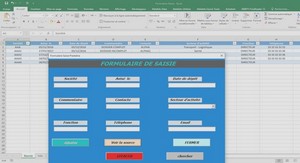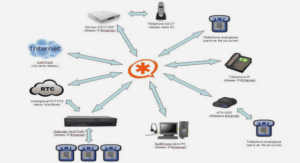A CONTRASTIVE ANALYSIS OF ARGUMENTS AND MODIFIERS IN ENGLISH AND MANDINKA
Background of the study
In this dissertation, we would like to explore the distribution of arguments and modifiers in English and Mandinka with the aim of finding similarities and differences between the two languages. In doing so, we see it very important to give careful attention to syntax, semantics and pragmatics, for we believe that describing a language amounts to the analysis of the communicative functions of different grammatical structures of that language. Having noticed that most previous works related to the description of Mandinka do not virtually rely on the interaction of syntax, semantics and pragmatics, with this research, we would like to underscore the different ways in which arguments and modifiers are used in English and Mandinka in order to convey meaningful and complete information. Actually, we are inspired to conduct the research of this like because we do opine that there should be an acceptable framework through which both English and Mandinka native speakers can get knowledge about the communicative functions of the grammatical structures of one another‟s language while taking into consideration various linguistic branches. Even if some linguists have made investigations on the Mandinka language, one must recognize that special attention has not been given to arguments and modifiers which can be contrasted in interesting ways. As far as English is concerned, this is a language on which much research has been conducted; as such, it is hard to capture any aspect of this language without repeating what other people have already dealt with. But what makes the particularity of this thesis is that it contrasts aspects of these two languages by using Role and Reference Grammar (RRG) that is a reliable linguistic theory one can use to capture and explain different grammatical systems of any language, especially languages with diverse structures. Then, before showing the background to this research and giving some essential ideas about arguments and modifiers, we see it very important to identify each of the two languages briefly. English is an Indo-European language, Germanic and Anglo Saxon by origin. Nowadays, this language has become a global lingua franca. At present, it is the first language for the majority of the population in several countries including the United States, the United Kingdom, Ireland, Australia, Canada, a few Caribbean nations and New Zealand. Contrasting this language with any other language is of prime importance because it is read and spoken all over the world. Mandinka is one of the local dialects of a language that is generally known as the Mandingo language. Among the other dialects of this Mandingo language, there are Bambara, Malinke, Djoula, Diaranke, and so forth. All these dialects are very close to one another that we can consider them one language that is spoken in countries such as Mali, Burkina Faso, Ivory Coast, Liberia, Guinea Bissau, Guinea Conakry, the Gambia, and Senegal. Now considered as a language on its own, Mandinka is spoken in countries like the Gambia, Guinea Bissau, and Senegal. As a matter of fact, contrasting aspects of English with those of this language while being interested in the communicative functions of those aspects may be useful to a large number of people. Investigations have been conducted on both English and Mandinka, but one must recognize that little research has been devoted to contrasting these two languages so far. At Cheikh Anta DIOP University, especially at the department of English, there are many contrastive studies carried out between English and some Senegalese local languages such as Wolof, Sereer, Pular, and so on, but few works are available on capturing similarities and differences between English and Mandinka. In this sense, after we have written our Master dissertation on these two languages, once again, we would like to contribute to their existing literature by exploring the distribution of arguments and modifiers. Our attention is also drawn to the fact that dissertations devoted to describing the structures of Mandinka alone are very rare at Cheikh Anta DIOP University. On this account, this thesis lies within a literary, academic, sociological and linguistic context. Having noticed that there are a lot of works dedicated to linguistic branches like phonology, morphology or syntax alone, we are among those who think that when describing languages, one must give a lot of attention to the interaction of syntax, semantics and pragmatics at once. By the way, believing in this ethos, it is in this sense that we have written our Master topic “A contrastive analysis between English and Mandinka: the predicative systems”. We should pinpoint that we have made out some areas that are not that explored with works on Mandinka; these are among others the ways some constituents are used to complete or modify the meanings of other constituents, but also how these notions of argumenthood and modification can contribute to the interpretations of constructions produced at different levels. Even if Chomsky (1957) puts “Colorless green ideas sleep furiously” to show the importance of syntax, one should not overlook the semantic aspects of grammatical structures, for Langacker (2008) argues that “portraying grammar as a purely formal system is not just wrong but wrong-headed. I will argue, instead, that grammar is meaningful” (p. 03). We believe that research conducted at Cheikh Anta DIOP University on English and Senegalese local languages should be more directed towards the communicative functions of language, and in order to develop such a model, one cannot favor one linguistic branch while neglecting another. We have noticed that significant research has been conducted by Creissels and Sambou (2013) on the Mandinka language by making the description with the use of the French language, but as far as English is concerned, we think that it is high time researchers at the department of English were interested in not only using the English language to capture salient features about Mandinka but also contrasting these two languages so that a large number of people can be aware of the similarities and differences they appear with as far as various dimensions are concerned. Researchers working on African languages in general and on Mandinka in particular must give more attention to the interactive dimensions of data they analyze, and they could not really succeed in doing so if they are not interested in linguistic theories that are related to the way the interaction of syntax, semantics and pragmatics in different grammatical systems can be best described. By the way, this is what motivates our choice of RRG whose general perspective is to maintain that “the communicative functions of language are central to the analysis of its structure” (Van Valin & Lapolla, 1997, p. 82). The argument-modifier distinction has been given special interests by some linguists (Lehmann 1985; Van Valin & Lapolla 1997; Barker 1995; Partee 1997; Grimshaw 1990; and so on), particularly at the RP level where this distinction is less clear in various languages. Then, our curiosity is awakened to direct our research towards not only the similarities and differences between arguments and modifiers in each of the two languages, but also to show the important roles such notions play in the transmission of meaningful and complete information. On this account, before embarking on any analysis, one may need to know how we understand and define the notions of argumenthood and modification.
Significance of the study
At a moment when Western languages are more and more spoken in African countries, we see it very pertinent to fight for the survival of African languages that are pregnant with interesting linguistic structures. Not only should African intellectuals teach African languages, but they must also write on them for future generations. In this connection, we would like to write again on English and Mandinka with the aim of finding similarities and differences between the two languages. The reader will be provided with much information on the way syntax, semantics and pragmatics relate to one another in order to make the meaningful interpretation of arguments and modifiers possible. Another area that shows the relevance of our study is that Mandinka linguistics is known by few intellectuals throughout the world; therefore, with the study of this like we would like to deepen our knowledge on the language by making constant investigations on it in order to explain its structures to future generations by putting useful written documents at their disposal. Nowadays, it is not easy to find as many documents as possible on Mandinka; on this account, we believe that with this work we will add to the existing literature of the language. The work of this like will help our brothers and sisters have more linguistic information available on Mandinka in case they want to carry out research on this language. English is today‟s lingua franca; therefore, writing on this language is of prime importance inasmuch as our work might be advantageous to a large number of readers. Using the English language in order to underscore salient aspects of the arguments and modifiers of the Mandinka language is a way to give the opportunity to a myriad of English linguists to know more about the structure of this language to some extent. Knowing about English linguistics is very important insofar as this language is read and spoken all over the world. Becoming an English linguist amounts to being able to understand other people around the world but also communicating and sharing with them what we have the best about English linguistics, for English is now a language that is needed in various areas of knowledge. In most prestigious colleges and universities in the world, English is the primary language of instruction. This language is becoming more and more important in career development, and for this reason, embarking on studies on a topic related to the structure of this language is a great asset for every intellectual. Otherwise, with this topic, we will also deepen our knowledge of the English language. Another aspect that shows the significance of this study is related to the content of our topic. It is often difficult to distinguish an argument from a modifier in particular languages, for there are similarities and differences between the two notions. In this respect, we have made our mind to write on these two aspects in order to master each one of them, to find out the syntactic and semantic differences between them but also to make the understanding of each one of them easier to a myriad of future English or Mandinka linguists that will be interested in carrying out research on the said aspects. In a nutshell, the fact of making a contrastive analysis between English and Mandinka within the framework of arguments and modifiers appears with several useful things that show the significance of our study. This research topic is so important that we must opt for a linguistic theory that can allow us to achieve our main goals. Accordingly, we shall devote the section below to the theoretical framework. 0.7 Theoretical framework To delineate a language, one needs to choose a theory in which they can conduct their analysis without creating confusion with concepts and labels, for the different linguistic theories may use different terms to refer to linguistic phenomena. On this subject, to help the reader get more information about the theory within the framework of which this research is conducted, not only shall we provide them with some theoretical information they need to comprehend this doctoral thesis, but we shall give an overview of the said theory as well. 0.7.0. General Considerations In this thesis, we have decided to work in the framework of Role and Reference Grammar (RRG) that is a theory that is used to describe languages in consideration of different linguistic branches such as syntax, semantics and pragmatics. RRG is used to explain and capture the way in which these different levels of representations interact in particular languages; this is what makes it interesting and special vis-à-vis some other theories. RRG is a monostratal theory that posits the actual form of the sentence as the only level of syntactic representation. It is a real functionally driven framework that takes semantics as a starting point for the analysis of clause structure. It does not posit any abstract underlying syntactic representations; the real occurring form of a sentence is the same as its syntactic representation. Being a theory that is applicable to many languages to the same degree, RRG also looks upon language as a system of communicative social action. This means that one cannot understand and explain grammatical structures without taking into consideration the reference of their semantic and communicative functions. RRG takes language to be a system of communicative social action, and accordingly, analyzing the communicative functions of grammatical structures plays a vital role in grammatical description and theory from this perspective. Language is a system, and grammar is a system in the traditional structuralist sense; what distinguishes the RRG conception is the conviction that grammatical structure can only be understood with reference to its semantic and communicative functions. Syntax is not autonomous. In terms of the abstract pragmatic and syntagmatic relations that define a structural system, RRG is concerned not only with relations of co-occurrence and combination in strictly formal terms but also with semantic and pragmatic co-occurrence and combinatory relations (Van Valin, 1993a, p. 02) RRG presents an organization that includes syntax, semantics and discourse pragmatics, three branches that may go hand in hand for the understanding and description of grammatical structures in any language. Each of these branches has a grammatical representation, and these representations are the syntactic and semantic representations, and information structure. There is an interaction between these three representations. The links between semantic and syntactic representations are explained with the linking algorithm that is bi-directional. Pragmatics may come into play and affect the linking process. Following Van Valin (2005), other elements that play important roles in the linking algorithm are the lexicon, the syntactic inventory and the parser. The lexicon is where is put the semantic representation of a sentence, and the said representation is based on the logical structure of the predicator. The lexicon is of paramount importance because it influences the argument structure of the predicate. As far as the syntactic inventory is concerned, it stores syntactic templates that refer to the syntactic representation that is, in fact, created by the parser. Still within the linking algorithm, we also have the constructional schemas that help represent cross linguistic generalizations while expressing language-specific properties of grammatical constructions with regard to syntax, semantics and pragmatics.
GENERAL INTRODUCTION |





